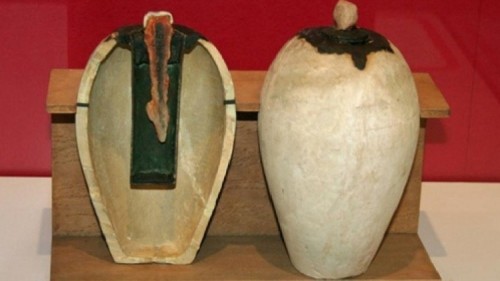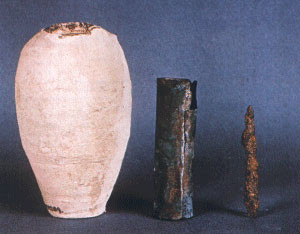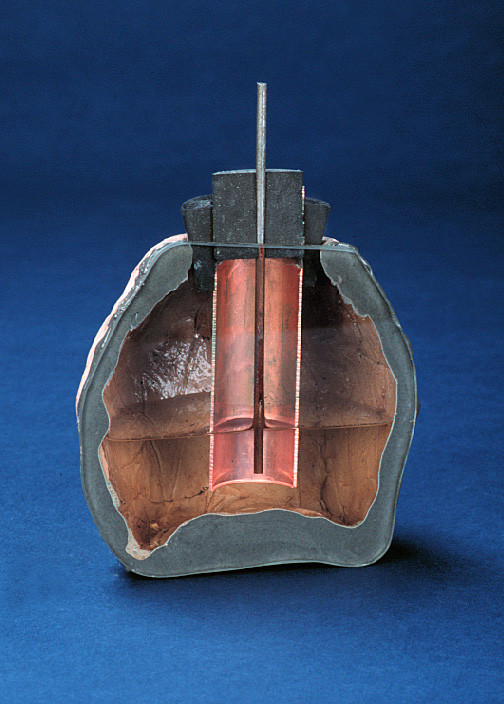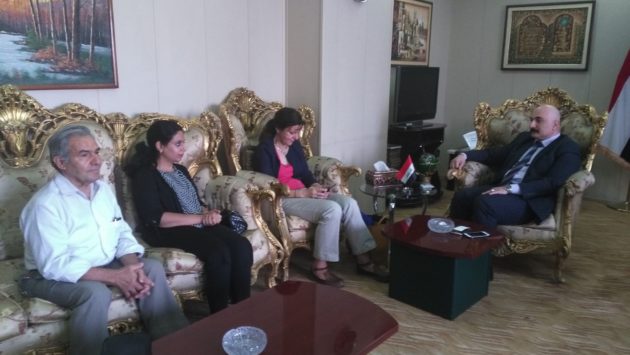Who Stole the Mysterious Baghdad Battery?
Mohamed altaher – arabic.rt
With the US invasion of Iraq in 2003, Iraq has lost many of its rare archaeological treasures, including the astonishing “Baghdad Battery” which — to this day — remains a phenomenon for which scientists have found no satisfactory explanation.
This precious historical and scientific artifact, meticulously crafted in materials with distinct chemical properties, is one of the most surprising mysteries of history. It is an achievement of ancient civilization before which modern man stands aghast, akin to the most dazzling monuments, unique architecture, and timeless drawings.
Researchers describe the “Baghdad Battery” as one of the most mysterious artifacts we possess. Therefore many legends and fictional interpretations have been crafted around it, including the suggestion that visitors from outer space brought it with them to the area and left it there.
Is it possible that an ancient civilization — no matter where it happened to be in other stages of development — had known about electricity many centuries before it was more officially discovered? Is the artifact found near Baghdad a real primitive battery, was it in use more than 20 centuries before its counterparts? Or is it just an object similar in its exterior to the cell discovered by the Italian Luigi Galvani in 1786?
Taking either side to this debate requires that we look more deeply into the story of the Baghdad battery, which began in 1936 during archaeological excavations in the village of “Khujut Rabu” near Baghdad.
Workers drilling there found a strange jar made of yellow clay amongst the ruins of the ancient city. The group of artifacts known as the ‘Baghdad Battery’ consists of a terracotta pot, approximately 13 cm tall, containing a cylinder made of a rolled copper sheet, in which fits a single iron rod. At the top, the iron rod is isolated from the copper by bitumen, which acts as a plug or stopper, and both rod and cylinder fit snugly inside the opening of the jar. The copper cylinder is not watertight, so if the jar were filled with a liquid, this would surround the iron rod as well.
The artifact has been exposed to weather and other conditions which caused significant corrosion. Additionally, the iron rod was found to be eroded by a solution which conducts an electric current, perhaps some kind of acidic juice or vinegar.
The battery or “Electric Jar” was found among the remnants of monuments belonging to the Parthian civilization (248-226 BC), which established a vast empire in the region, and therefore the “Baghdad Battery” is sometimes called with “Parthian Battery”.
The Baghdad Battery drew the attention of the German archaeologist, Wilhelm Koenig, when he saw it among other artifacts at the Iraqi National Museum in 1940. After he studied it carefully, he proposed that the jar might be a cell used to generate electricity for the purpose of silver and gold plating.
Later, a laboratory engineer of the General Electric Company in Pittsfield, (a city in the United States) tested a model of the Baghdad Battery he recreated using the illustration of it done by Wilhelm Koenig. Using copper sulfate, he was able to generate electricity of 0.5 volts. In 1970, another German scientist conducted an experiment using a replica of the Baghdad Battery: he filled it with fresh grape juice and was able to generate 0.87 volts, enough electrical power to paint a silver statue with gold.
Scientists and specialists have made several assumptions in the attempt to solve the mystery of the Baghdad Battery: one of them is that the pottery jar was dedicated to the preservation of papyrus scrolls. Another supposes that it was used in relation to acupuncture, especially since needles have been found near the scene where the Battery was discovered. A third hypothesis for the Baghdad Battery suggests that it was made specially for the practice of ritual magic, and that priests may have hidden the battery inside their idols and statues of the Gods. In this way, perhaps they hoped to persuade people of their magical strength, which would be felt directly in the warmth created by the light when the objects concealing the Battery were touched.
None of this conclusively resolves the mystery of the “Baghdad Battery”, which is just one of the curiosities stolen from the Iraqi National Museum during the US invasion of Iraq. In fact, thousands of other unique artifacts and precious manuscripts have been tragically looted.
Perhaps first and foremost then, we must make concerted efforts to uncover the mystery of the Battery’s disappearance, and try to track the elusive terrain of the black market, especially within Israel and other Western countries. Ultimately, the wondrous Baghdad Battery, in all its mystery, should be returned to its rightful home — in Iraq.







